This is not going to be a review, just some early thoughts on my experiences using the oldest camera I have so far owned. The Voigtlander Vito B has been reviewed many times, not least by Hamish on this site here. I hope, however, that this article might be of general interest or in some cases bring some memories or nostalgia. I came to own my Vito B after my mother found it in a charity shop where she works, knowing my interest in film cameras she bought it for me. When she brought it round, I didn’t really know what to expect, but was very pleasantly surprised!
The camera came in a large leather case, but not just a camera, the case contained a plethora of accessories and paperwork. Everything was in excellent condition and obviously very well looked after. I have put a few rolls through the camera and it works perfectly, and feels of very high quality construction. There is also a light meter, rangefinder, exposure calculator and chart, a gorgeous lens hood (I love that V on the hood), some filters, a set of manuals, sales receipt and inspection report from Voigtlander.
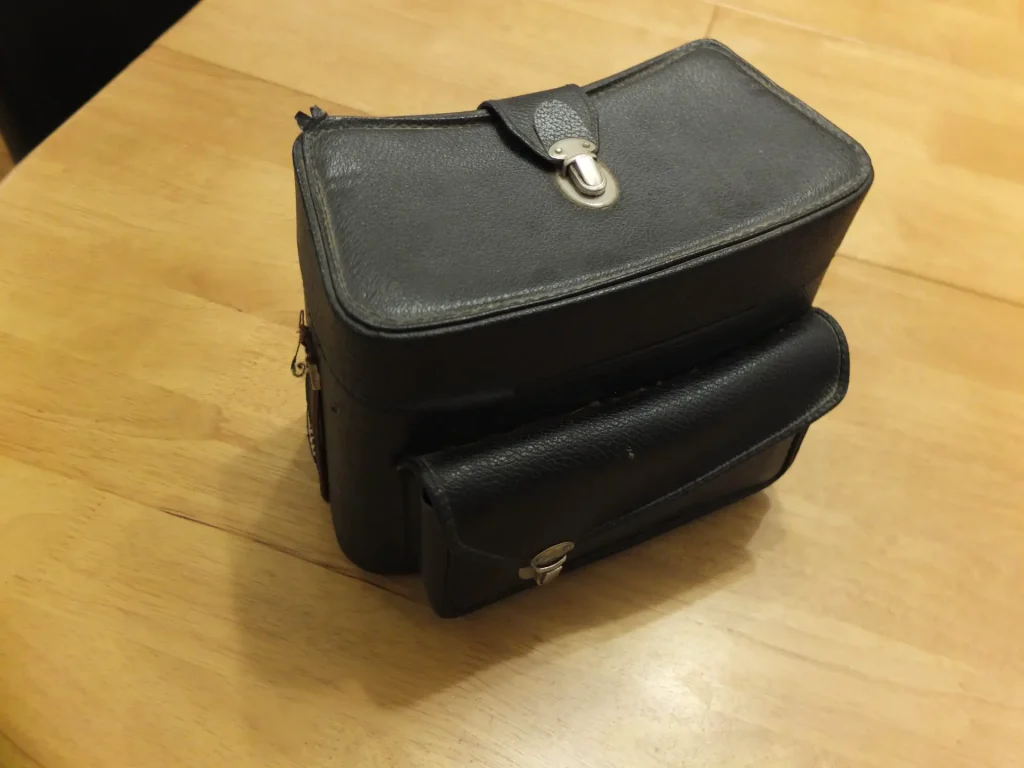
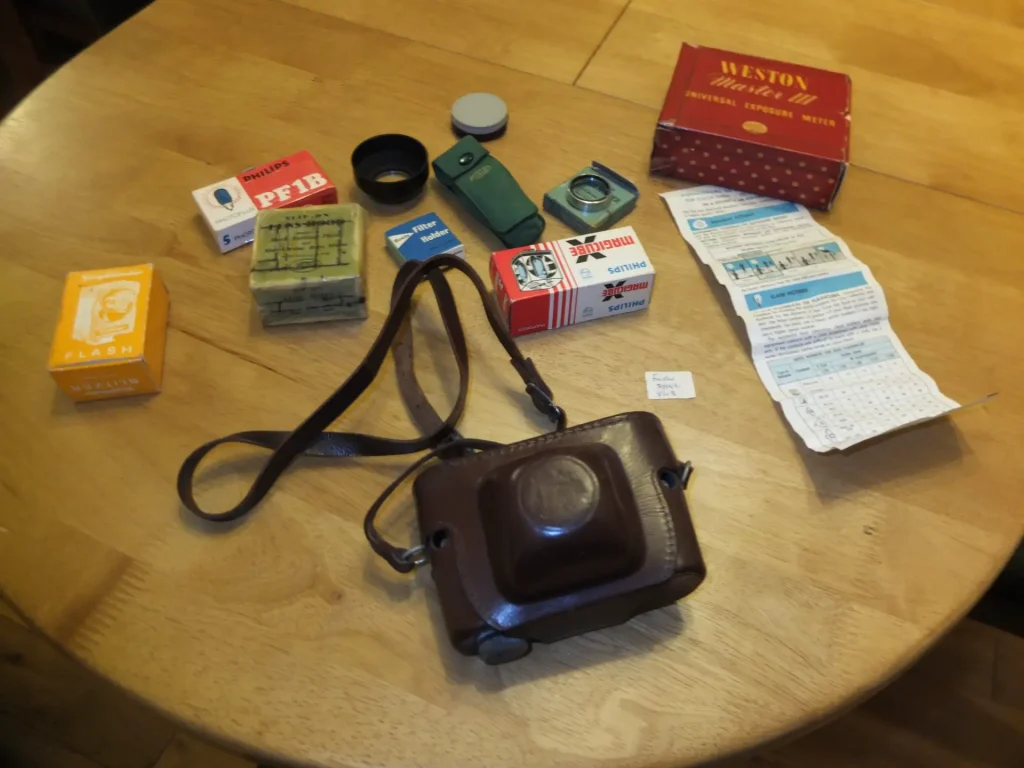
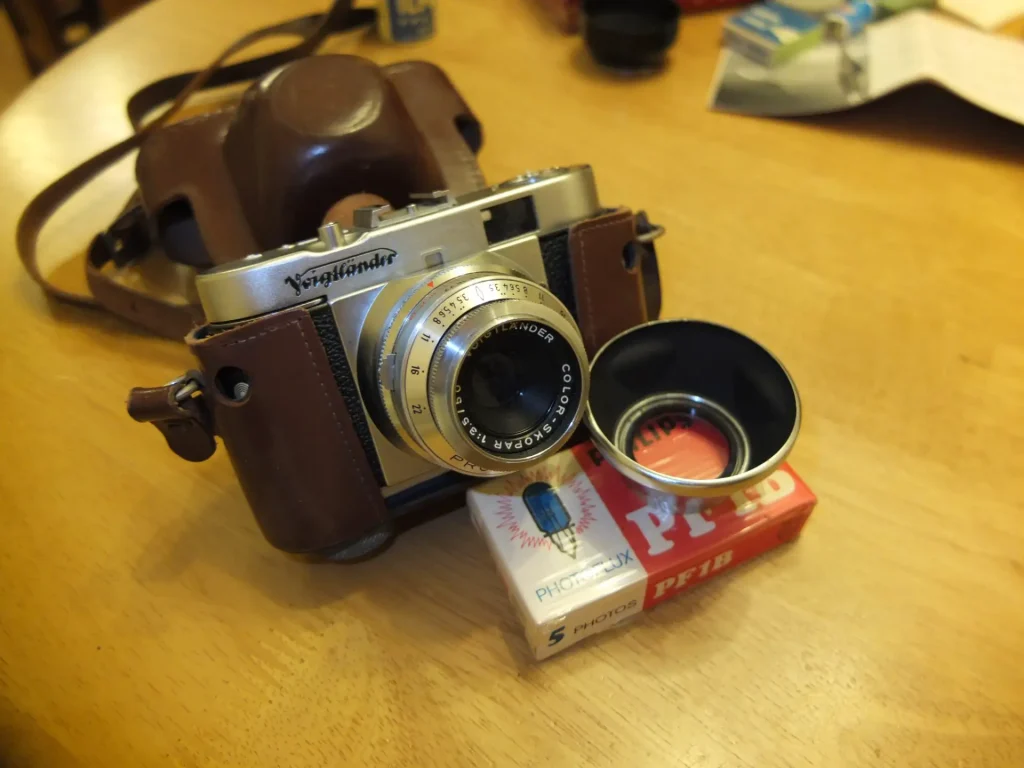
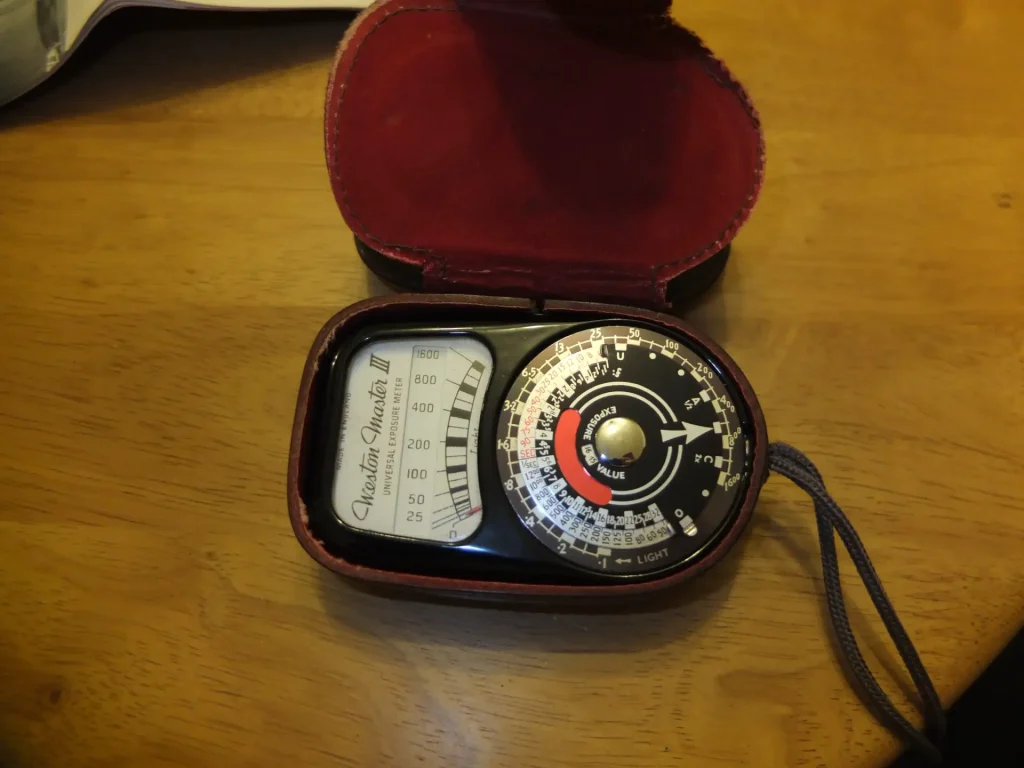
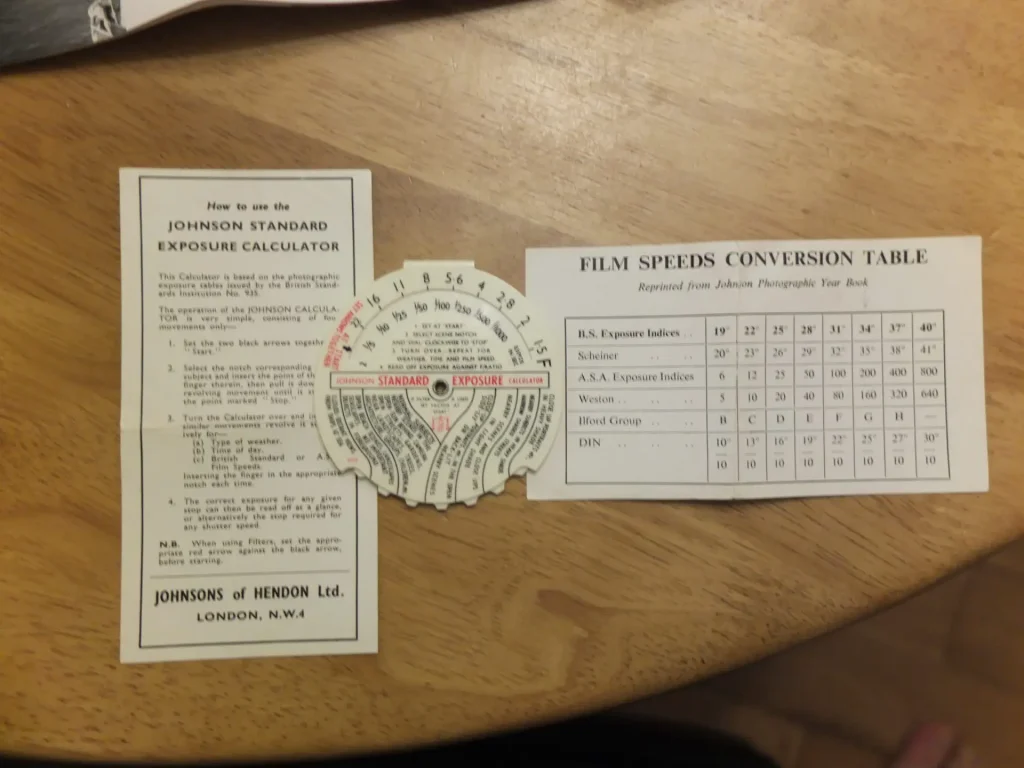
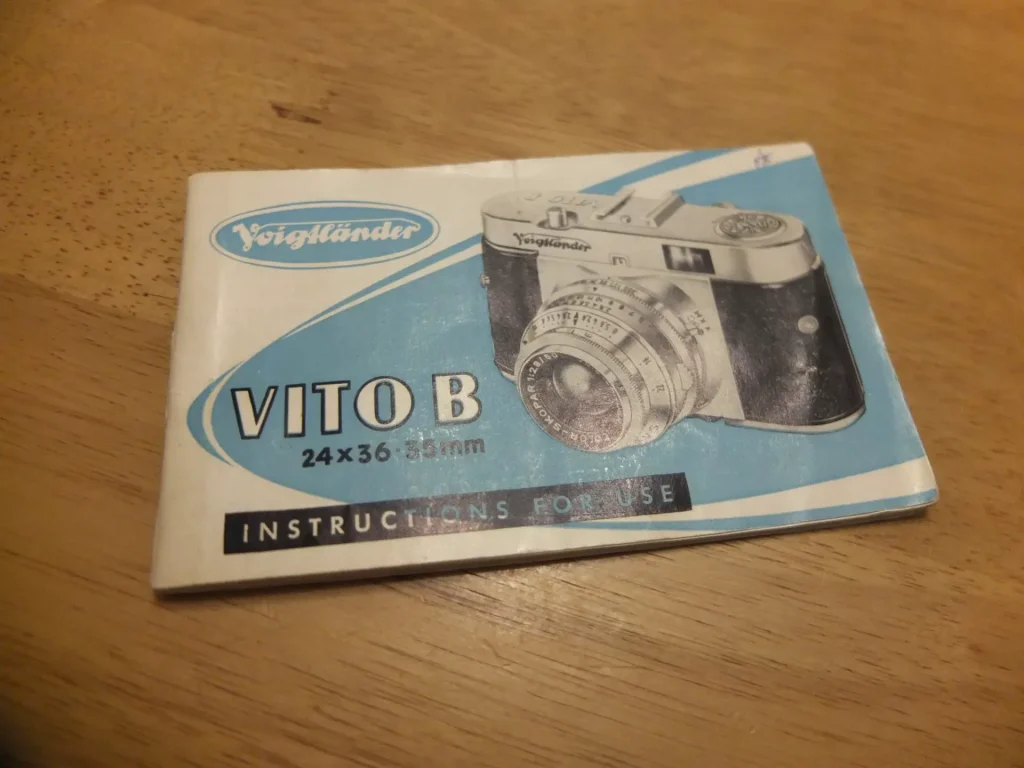
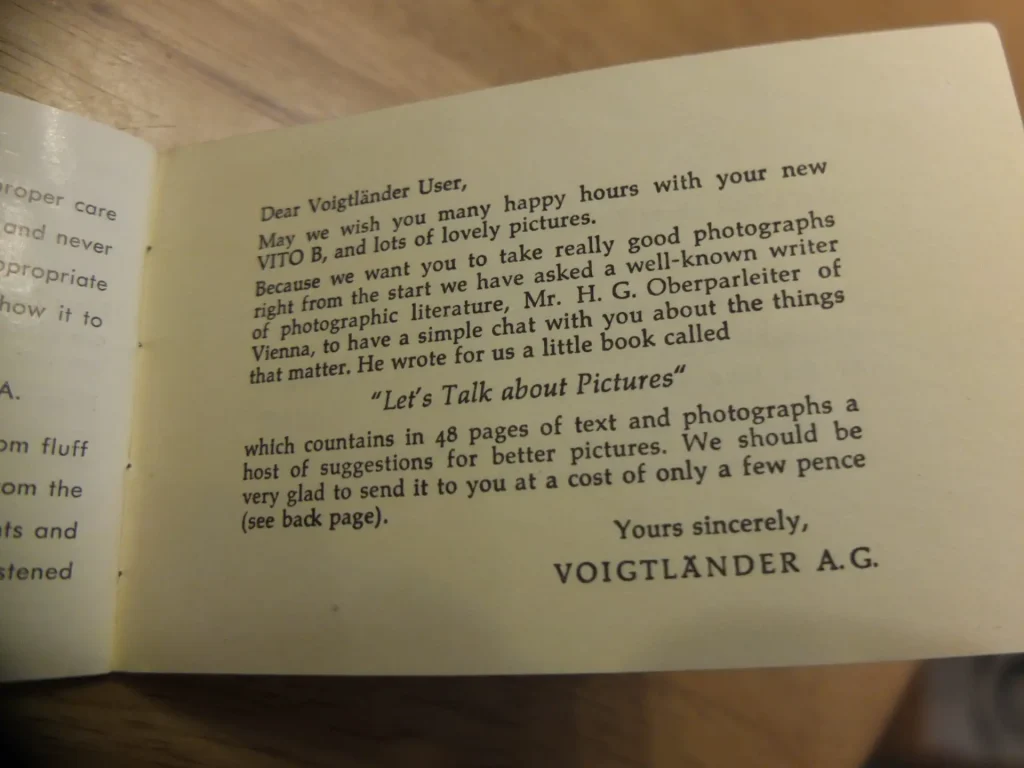
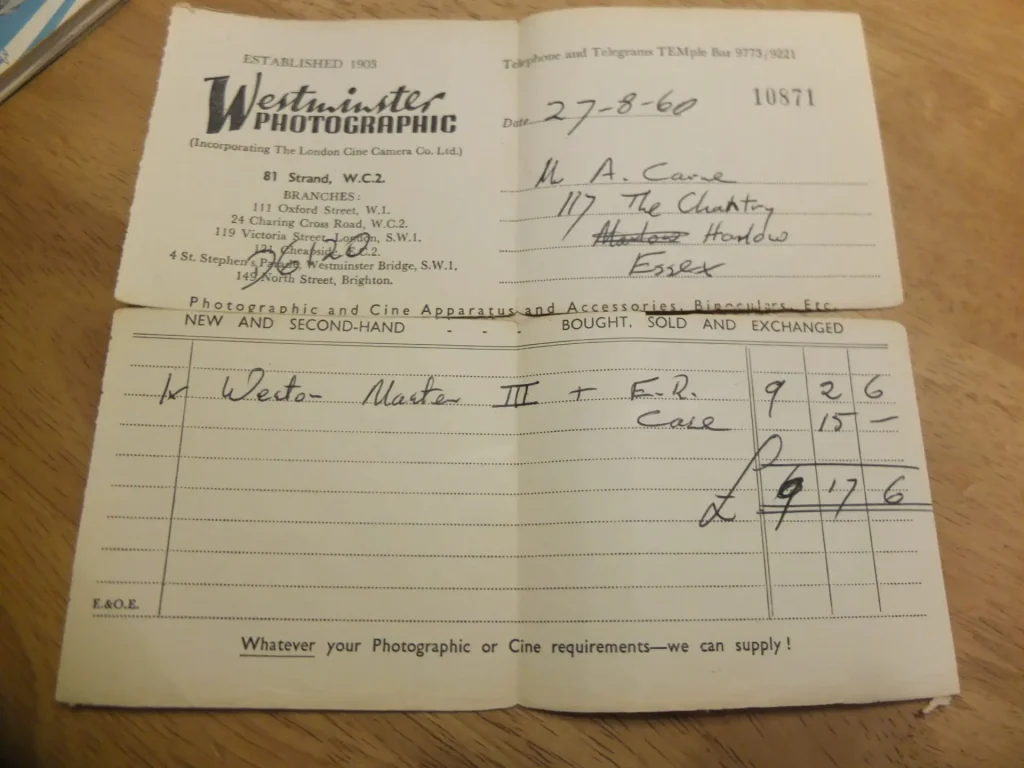
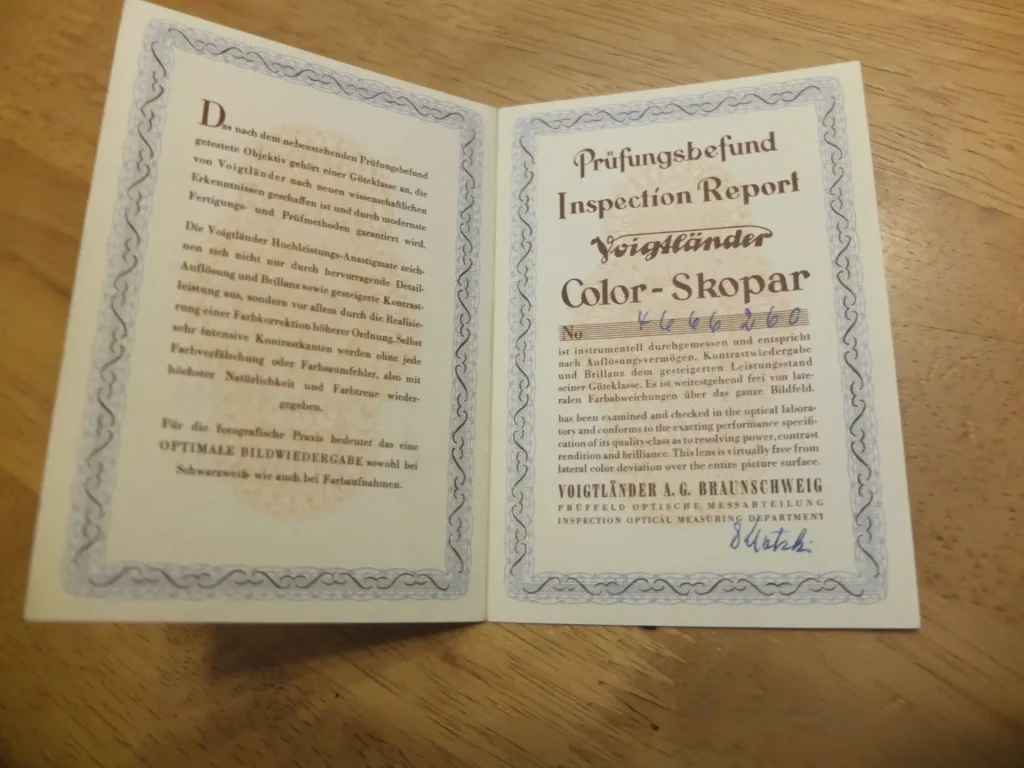
The camera itself is in remarkable condition. These cameras, I believe, were manufactured between 1954 and 1959, making it by far the oldest camera I have ever used. The camera I have is exceptionally clean and well kept, the only real sign of wear is the fading of the graphic on top of the rewind dial.
It is hard not to compare it to my other camera with a decent age, my 1960s Minolta Hi-Matic7. These cameras really are radically different, and while I love my Minolta rangefinder, and have some lovely results with it, there does seem to be a vast difference in build quality. The Vito B seems to be built with an superior build quality, the body is finished in a mixture of brushed and shiny metal, the leatherette has also aged very well which leads me to believe the original quality and workmanship must have been high.
The function of the camera is lovely, it has a surprisingly small form, but is very tactile and sits comfortable in the hand. The shutter release is nicely smooth, and I really love the winding lever which sits integrated into the back of the body of the camera. My Minolta, when compared, seems a little rough around the edges and there is a slight wobble in the lens, which the Voitlander doesn’t have.
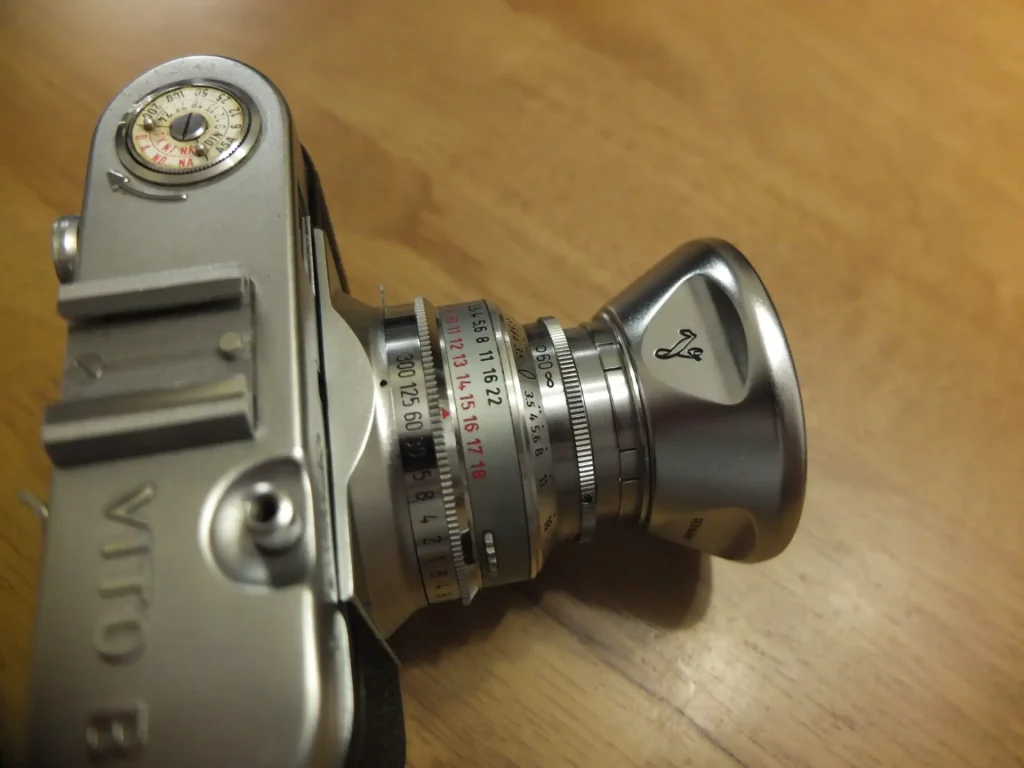
As lovely as the camera feels and looks, it is after all a practical tool, and needs to be used. I found shooting with the Vito B a slight challenge in some areas. I have never really trusted my Minolta’s light meter, partly due to the voltage differences in modern and old batteries. So I also use a combination of smart phone meter and sunny 16, this has served me well so far, although of course there have been mistakes. The lack of a meter, therefore, was not so off putting, but the maximum shutter speed of only 1/300 a bit of a shock to the system.
I have been using 200 speed film, but with the next speed down at 1/125, neither of these shutter speeds seem that close to 1/200 for me to confidently use sunny 16 – though I suppose choosing 1/125th would probably be ok given the flexibility of modern film emulsions. Having a max shutter speed of 1/300 and an aperture range of 3.5 to 22 means that the use higher speed film, for example ISO 800 and 1600 will be impractical for use with this camera outside of specifically lower lit environments. Perhaps if I were to take it for a walk in some woods, or maybe in more evening light I could make use of those sorts of films if I really wanted to. I guess, the reality is, these high speed emulsions were just not available when this camera was on the market.
The more unnerving part of practically using the camera though was the lack of a focussing aid build into the camera. Although I now understood the need for a separate pocket sized accessory rangefinder tool.
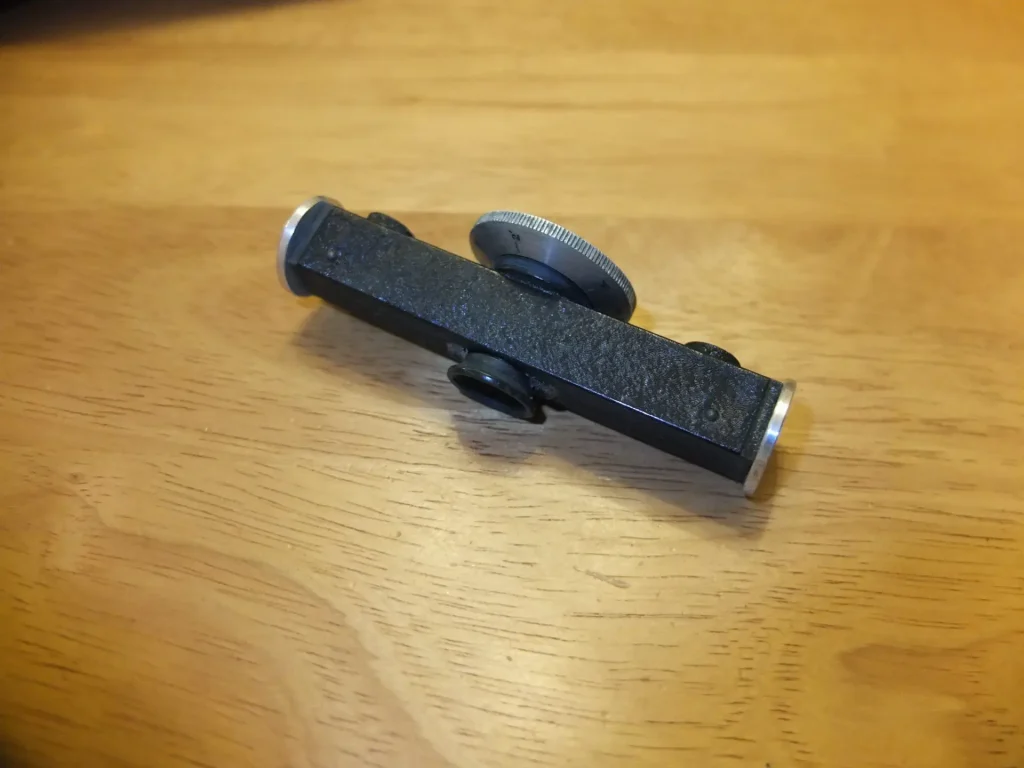
For my first few films I used a mixture of distance estimation and using the little rangefinder. Both methods I found to be pretty slow, definitely not conducive to speedy off the cuff shots. I think everything I did shoot was in focus, although I was greatly helped by shooting outside in summer, the small aperture giving me a very generous depth of field.
This is just how photography would have been enjoyed by someone using a camera like this in the 50s. Though, with time and practice – as I am sure was the case for user of this camera back then – I expect I would find myself able to shoot faster. Certainly the added depth of field that modern day higher-speed films will allow for quicker snaps using the depth of field indicators the barrel of the lens. It would be interesting to see how I succeed with a set of more dimly lit scenes, or with the need to focus to a closer distance more accurately.
A couple of sample photos:
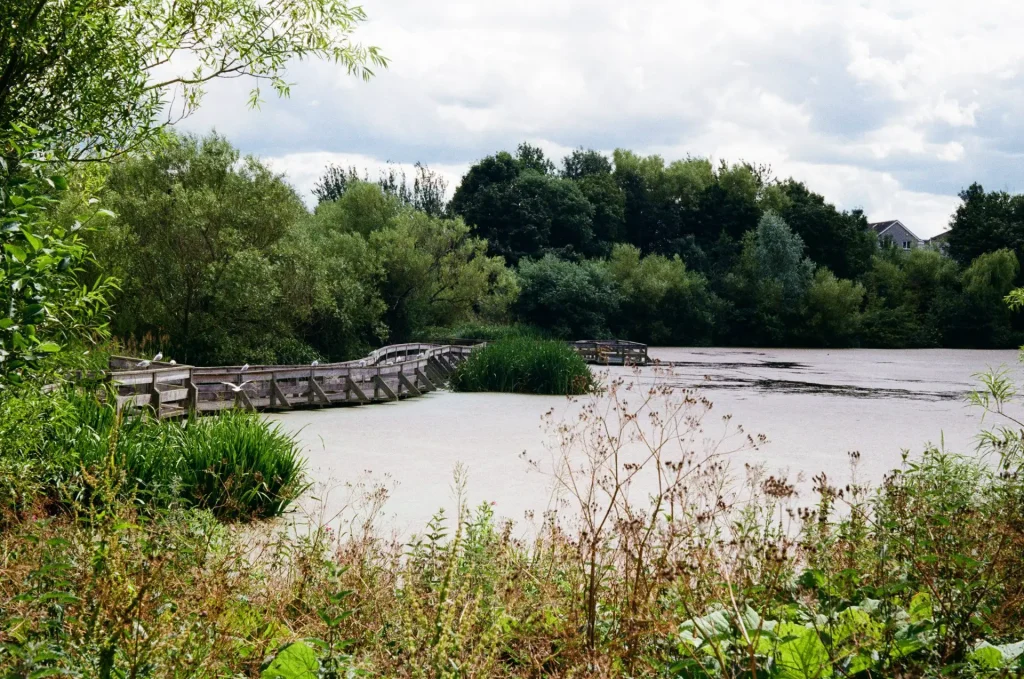
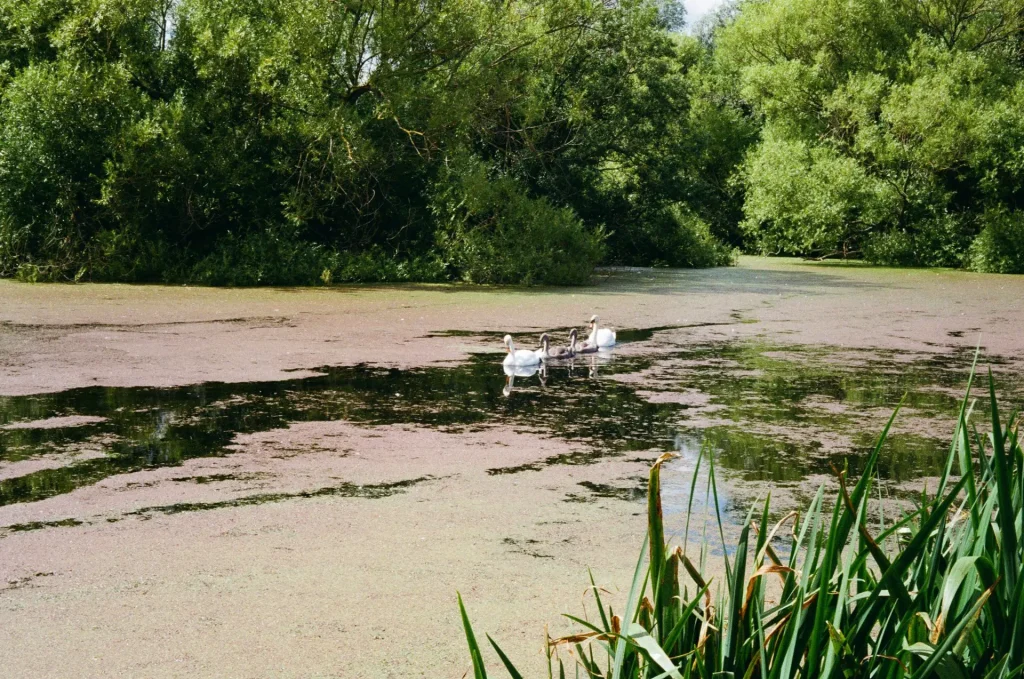
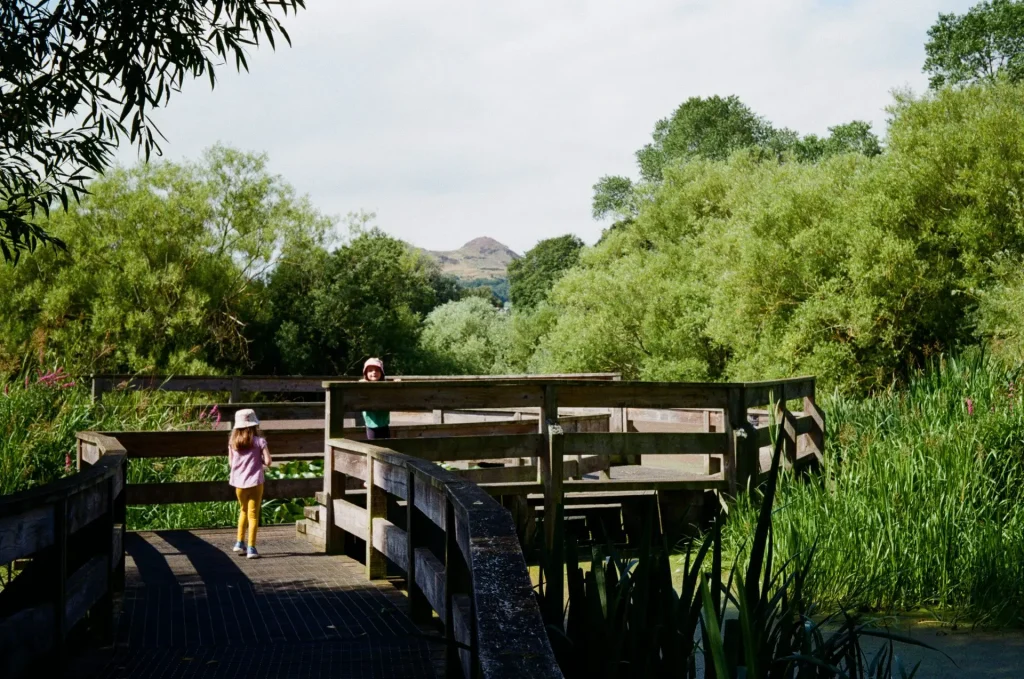
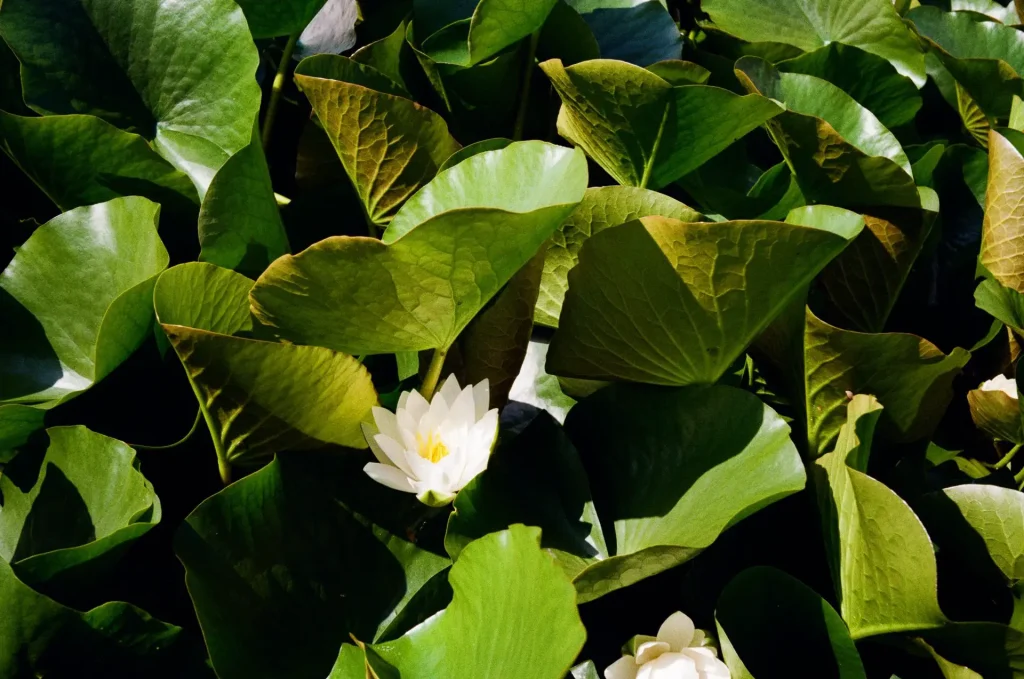

Overall this is a really well built and delightful camera. The looks are pure classic mid-century. Using it, there is the challenge of working with a camera built without focussing aids and with what is now regarded as pretty slow top shutter speed.
Hope you have enjoyed the pictures of equipment and the photos I have taken, I would love to hear if anybody has experience or memories of using any of this gear, especially the light meter and rangefinder.
Thanks for reading.
Seb
http://instagram.com/sebcopley
Share this post:
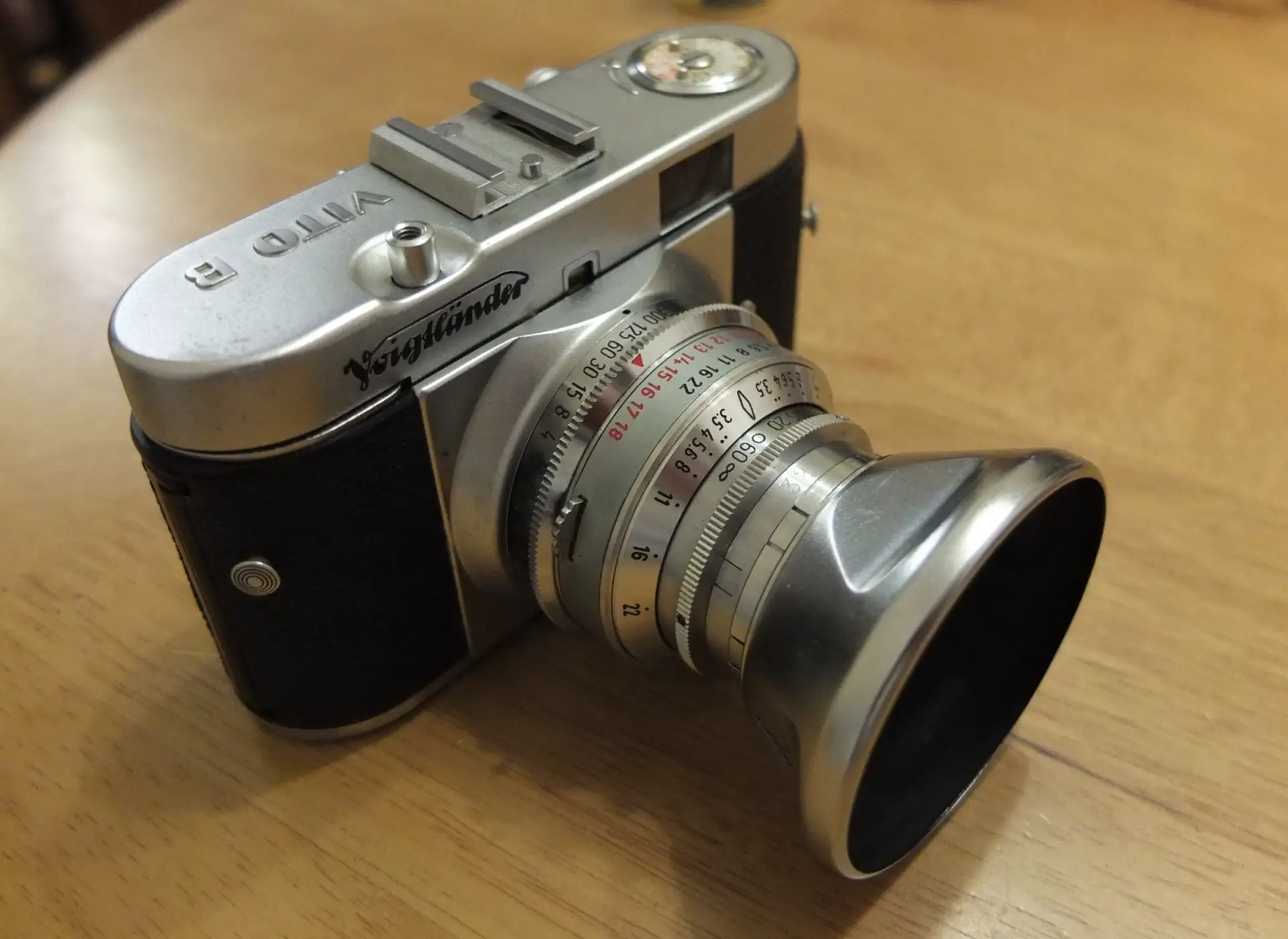








Comments
Tom Redd on Voigtlander Vito B, Plus Accessories – A Very Interesting Charity Shop Find – By Seb Copley
Comment posted: 23/03/2022
Phil on Voigtlander Vito B, Plus Accessories – A Very Interesting Charity Shop Find – By Seb Copley
Comment posted: 23/03/2022
Eryridave on Voigtlander Vito B, Plus Accessories – A Very Interesting Charity Shop Find – By Seb Copley
Comment posted: 23/03/2022
I had a couple of wonderfully sharp shots among the weirdness and I'm hoping that with use that the camera is exercised and becomes more reliable. TBH, I love how it feels in the hand and shooting and i may pay for a CLA even if it costs more than the camera is worth as it deserves to be used.
Alan Simpson on Voigtlander Vito B, Plus Accessories – A Very Interesting Charity Shop Find – By Seb Copley
Comment posted: 23/03/2022
Alex G on Voigtlander Vito B, Plus Accessories – A Very Interesting Charity Shop Find – By Seb Copley
Comment posted: 23/03/2022
PSA: only test these with film loaded. They can’t function without it.
Kurt Ingham on Voigtlander Vito B, Plus Accessories – A Very Interesting Charity Shop Find – By Seb Copley
Comment posted: 23/03/2022
Michael McD on Voigtlander Vito B, Plus Accessories – A Very Interesting Charity Shop Find – By Seb Copley
Comment posted: 23/03/2022
Neil Kesterson on Voigtlander Vito B, Plus Accessories – A Very Interesting Charity Shop Find – By Seb Copley
Comment posted: 25/03/2022
Graham Orbell on Voigtlander Vito B, Plus Accessories – A Very Interesting Charity Shop Find – By Seb Copley
Comment posted: 03/04/2022
There is a calibration adjustment screw on the back of the meter. Cover the light sensor with you hand to block out all the light and carefully turn the screw until the needle points to zero. Doing that makes a big difference to its accuracy. Some Weston light meters had a problem with the glass coming unstuck and jamming the needle, so avoid pressure on the glass. Camera mechanics used to be familiar with repairing a loose glass but these days perhaps not so much.
I’ve still got a box full of various Weston, Gossen, and Seconic meters ( all with incident light cones ) that used to hang on their string around my neck and sit in my pocket ready for use. The technique I mentioned of taking a reading off your hand gives a similar result to using an Invercone which is generally the most accurate method.
sebcopley on Voigtlander Vito B, Plus Accessories – A Very Interesting Charity Shop Find – By Seb Copley
Comment posted: 06/04/2022
Many thanks